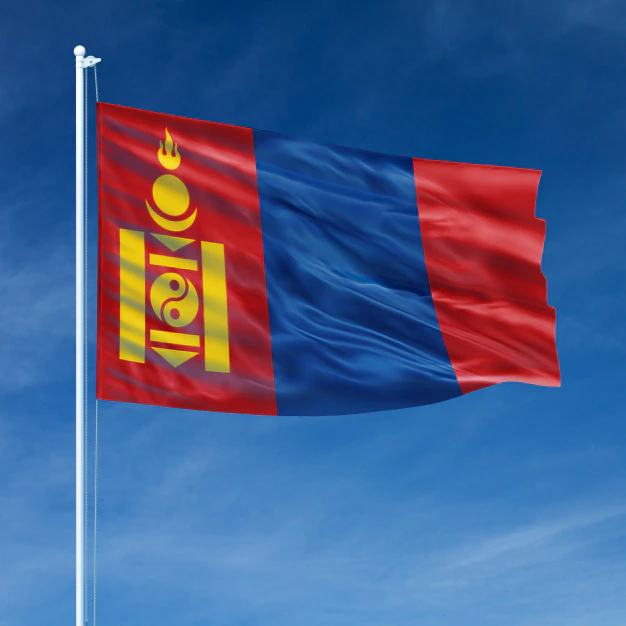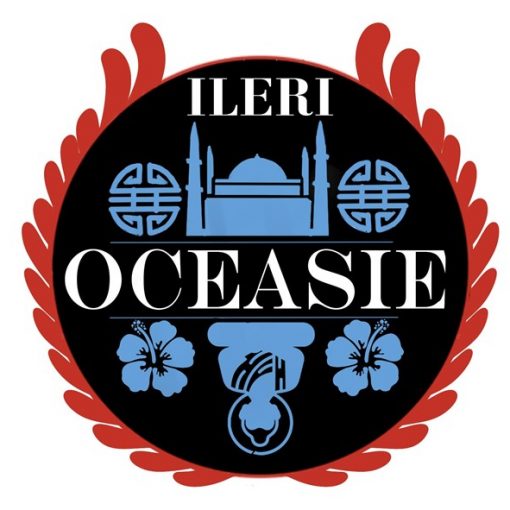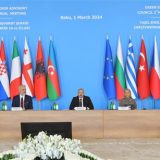Mongolia, a vast country in East Asia, is distinguished by its rich history and distinctive geography. At the heart of its political and economic development lies the ‘third neighbour’ strategy, a guiding principle that shapes its external relations. Faced with the imposing proximity of China and Russia, Mongolia is seeking to establish strong links with other international players in order to diversify its partnerships and reduce its economic dependence. This approach reflects the country’s desire to maintain a skilful diplomatic balance in a complex geopolitical context.
Landlocked between the authoritarian giants of China and Russia, Mongolia has developed a strategy to open up its borders and triangulate its relations with these two geographical neighbours. Conceived after the democratic revolution in the winter of 1989-1990, this strategy is based on a consensus that transcends partisan divisions. However, the Sino-Russian rapprochement and tensions between Western countries and China and Russia are complicating the implementation of this Mongolian strategy.
Mongolia’s international relations have developed along three main lines. Firstly, we will examine Mongolia’s historical and contemporary relations with Russia, highlighting the evolution of this geopolitical proximity. Next, we will look at the complex links with China, analysing both the history of this relationship and the challenges and opportunities that emerge from it. Finally, we will look at partnerships with other international players such as Kazakhstan, Japan and South Korea, assessing their importance in Mongolia’s ‘third neighbour’ strategy and examining the resulting cooperation and alliance projects.
Mongolia: History, Resources and Geopolitics
Mongolia is located in East Asia, bordered to the north by Russia and to the south by China. Its territory covers 1.56 million km2 and is characterised by three mountain ranges: the Altai Mountains to the west, the Khentii Mountains to the north-east, and the Khangai Mountains in the centre, with the Gobi Desert to the south. Mongolia is the least densely populated country, with just 2 inhabitants per square metre and a total population of 3.40 million. Mongolia is the least densely populated country, with just 2 inhabitants per square metre and a total population of 3.40 million. Density is highest around the main cities, such as Erdenet, Darkhan and especially Ulan Bator, the capital, which has grown very rapidly, from 100,000 inhabitants in 1950 to almost 1 million 400,000 in 2014. The Mongols were originally a nomadic herding people, with the climate and altitude making farming difficult.
Today, around 1/3 of the population is nomadic or semi-nomadic, and the majority ethnic group is the Kalkha, who make up 80 percent of the population.
Mongolia’s history is marked by 3 major periods. Firstly, in 1206, Genghis Khan unified the nomadic peoples and founded the first Mongolian state. When he died in 1227, he left an empire stretching from present-day Beijing to the Caspian Sea. His successors extended the empire as far as the Mediterranean and Eastern Europe, reaching its apogee in 1280. The Mongol Empire then covered the whole of Eurasia, becoming the largest empire in history. The second great period in history was the Chinese domination of the Qing dynasty in 1820. Of Manchu origin, Mongolia was then separated into two administrative divisions until 1912, when the empire came to an end : Outer Mongolia and Inner Mongolia.
The third key period was the Soviet period: from 1924, Mongolia was a People’s Republic, two years after the birth of the Soviet Union, and remained an independent satellite state of the USSR until 1937. In 1990, the Mongolians rejected Soviet tutelage and held their first free elections. In 1992, a new constitution established a parliamentary democracy. Today, democracy is stable and a market economy has been established, but Mongolia is landlocked and still under Chinese and Russian economic influence. Mongolia’s resources are immense, including copper, coal, gold, iron, zinc and molybdenum.
The main deposits are in the Gobi desert, with “Oyu Tolgoi”, or Turquoise Hill, one of the largest copper and gold mines. There is also “Tavan Tolgoi”, or “holy hill”, one of the largest open-cast coal mines.
However, major infrastructure projects to exploit these resources cannot be financed by the Mongolian state. This territory, abundant in natural resources and deeply rooted in history, is the subject of an analysis of Mongolian policy as it seeks to consolidate its sovereignty, while confronting the competing influences of China and Russia.
How does Mongolia’s ‘third neighbour’ policy, which focuses on balancing relations between China and Russia, reflect the Mongolian nation’s geopolitical dilemma as it seeks to reconcile its imperative for economic cooperation with the preservation of its political independence? In our analysis, we will look first at relations with China, then those with Russia, before turning to Mongolia’s other partners.
After the fall of the Qing dynasty in 1911, Mongolia went through a period of transition, becoming a satellite of the USSR until the late 1980s. From 1989-1990, the Mongolian nation embarked on a national revolution to gain its independence. Opting for a democratic transition and opening up its economy to the market, Mongolia sought to strengthen its sovereignty by liberating itself economically.
This desire to diversify its trading partners, known as the “third neighbour” strategy, was aimed at preventing excessive influence from China or Russia, while at the same time legitimising its independence.
Relations with Russia
Interaction between Mongolia and Russia takes place against a backdrop of many bilateral events and exchanges. To understand this dynamic, let’s explore the historical evolution of Mongolian-Russian relations, assess Russia’s crucial role as a third neighbour, and analyse the recent developments that have left their mark on their relationship.
History of Mongolian-Russian relations
Mongolia made its first contact with Russia in the 13th century, during the period of the Great Mongol Empire. This first contact proved to be brutal, marked by the violence of the Mongol warrior people, leading to the destruction of major Kievan Rus’ cities such as Moscow, Kiev and Vladimir. Until 1480, the Kingdom of Kiev remained under the influence of the Golden Horde, an empire that had emerged from the Mongol Empire. During the occupation by the Tatars, the Russian princes made pacts and alliances with the Mongols, notably by marrying princesses from this empire. This period of history also contributed to Russia’s conquest of the East in the 17th century.
Three centuries later, in 1912, Russia and Outer Mongolia sealed an alliance with the signing of the Russian-Mongolian Cooperation Agreement. The aim was to reduce Chinese control over Mongolian territory, which had become independent from the Middle Kingdom a year earlier. The Russian army remained in Mongolia until the fall of the USSR.
However, Mongolia was never annexed by Russia and remained the Mongolian People’s Republic until 1992. Although Mongolia expressed its desire to join the USSR on several occasions, the Soviet leaders avoided risking a confrontation with China and being perceived as imperialists by
imperialist by adding territories that were not part of the Russian Empire. By leaving Mongolia independent, the USSR was able to benefit from the advantages of an alliance without the disadvantages, including optimal economic and trade exchanges, similar political regimes and smooth diplomatic relations.
Over the course of the 20th century, ties between Russia and Mongolia grew closer, mainly thanks to Russia’s role as protector of Mongolia’s independence from China. Russia has exerted a considerable influence on Mongolian culture, particularly in the fields of architecture, languages and alphabets, as well as in the evolution towards a predominantly sedentary lifestyle.
Russia’s importance as a “third neighbour” and recent developments in relations
In recent years, Mongolia has shown a tendency to distance itself from its historical partners, particularly Russia, for fear of increasing its dependence on agricultural and energy resources. It should be noted that bilateral trade between the two countries is complex, with 95% of exports coming from Russia to Mongolia. The resources exported by Mongolia, mainly coal and copper, are plentiful in Russia. At present, trade with Russia accounts for around 15% of the country’s external economy.
Diplomatic relations between the two states have also tended to decline since 1989, when Russia and Mongolia adopted divergent foreign policies. With the reduction in the number of military personnel on the Russian-Mongolian border, Ulan Bator has drawn closer to other countries, particularly the United States as part of the fight against terrorism. This move is part of the “third neighbour” strategy that Mongolia is implementing to assert its independence from the two giants that surround it.
Moscow has also voiced its opposition to plans to build hydroelectric power stations on the Selenga river, which has led to tensions between the two countries. As for Mongolia’s position on the war in Ukraine, it remains rather vague, with the current government avoiding taking a position, while former members of the government and civil society strongly condemn Russia.
Despite this, the situation seems to be improving, with many partnerships established over the last six years. One notable example is the revival of Russian investment in Mongolian Railways since 2018, also known as Ulan Bator Railways. This company is equally owned by Russia and Mongolia. Another cooperation project involving the three neighbours came into being last decade, namely the China-Mongolia-Russia Economic Corridor signed in 2016. It is part of the New Silk Road and the opening up of the Steppe Route. The project aims to link China’s rail network to the Trans-Siberian Railway via Mongolia, requiring major investment from all three countries.







